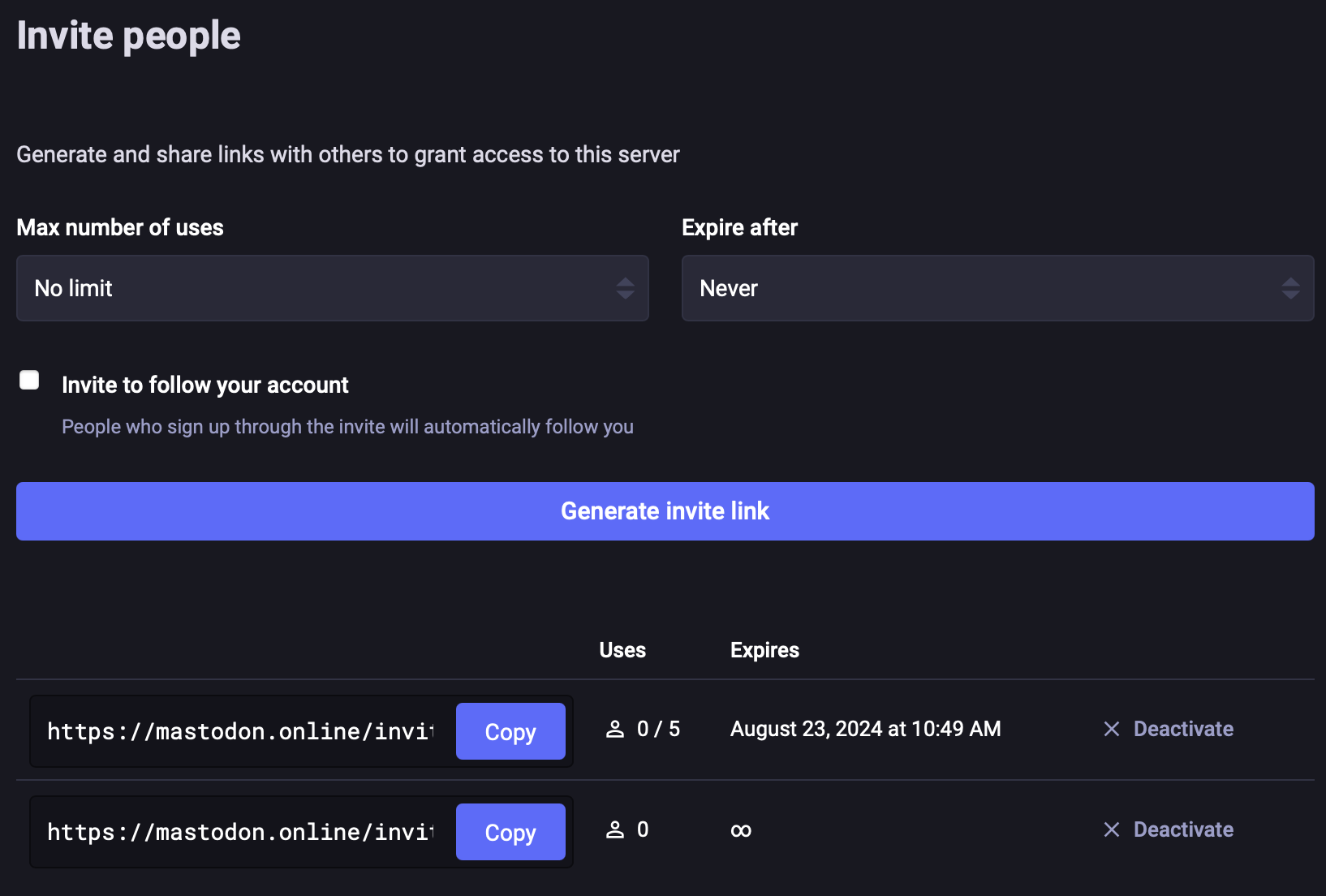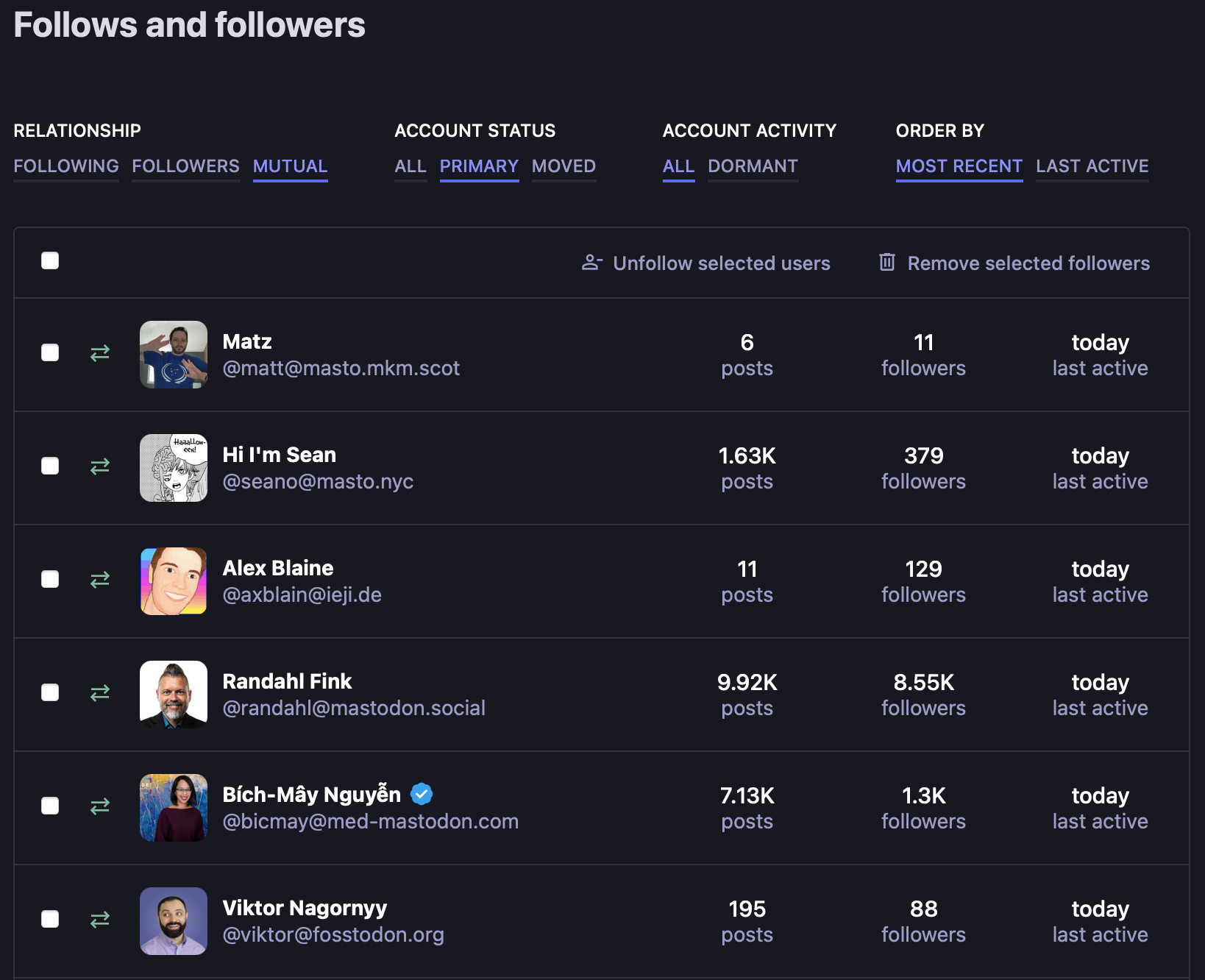More settings
Invite new users, sort through your contacts, and secure your account.
Generating invites

Invite people to join your server
Invite links can be generated and shared with other people, and some servers require invites in order to register for an account. When generating an invite link, you can set the max uses to limit how many times a certain link is used, or how long it has been active. Invite links can be deactivated at any time.
Go to Preferences > Invite people to generate invite links.
Follows and followers

Mutuals who have not moved their account, sorted by most recent
Within settings, you can find a relationship manager that lets you filter and sort through the profiles that you are connected to, based on different criteria:
- Relationship: whether a profile is following you, followed by you, or mutually following each other.
- Account status: whether a profile is currently marked as redirected or not.
- Account activity: whether a profile has posted in the past month or not.
You can select certain users to unfollow, or to remove from your followers, by checking the boxes and clicking the corresponding button in the table header.
Account settings
From the account settings, you can change your email address, set a new password, revoke active sessions or authorized apps, and enable two-factor authentication.
Last updated